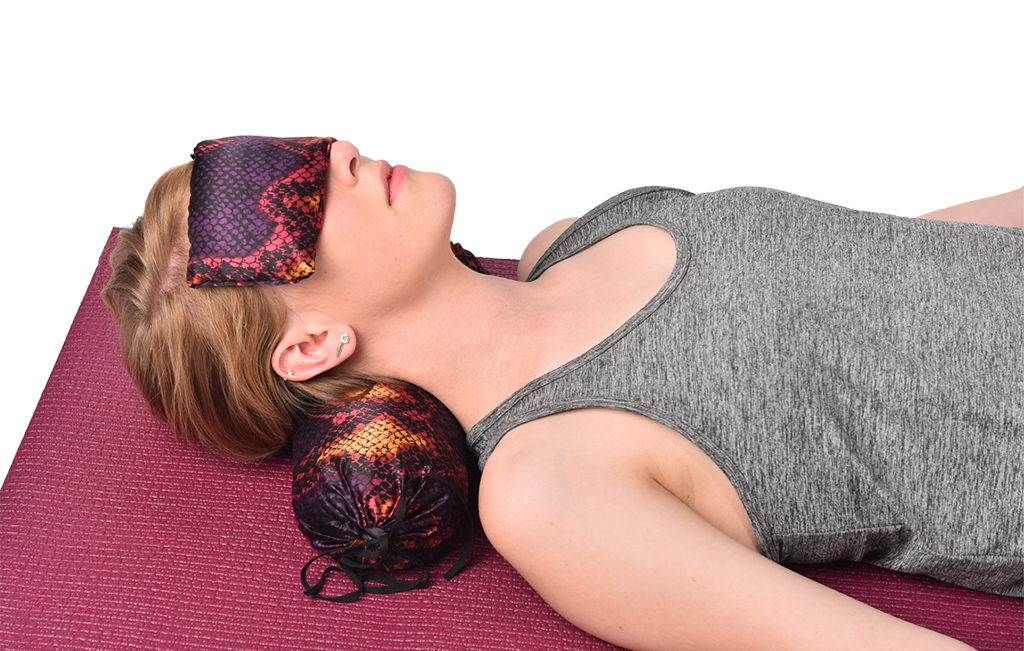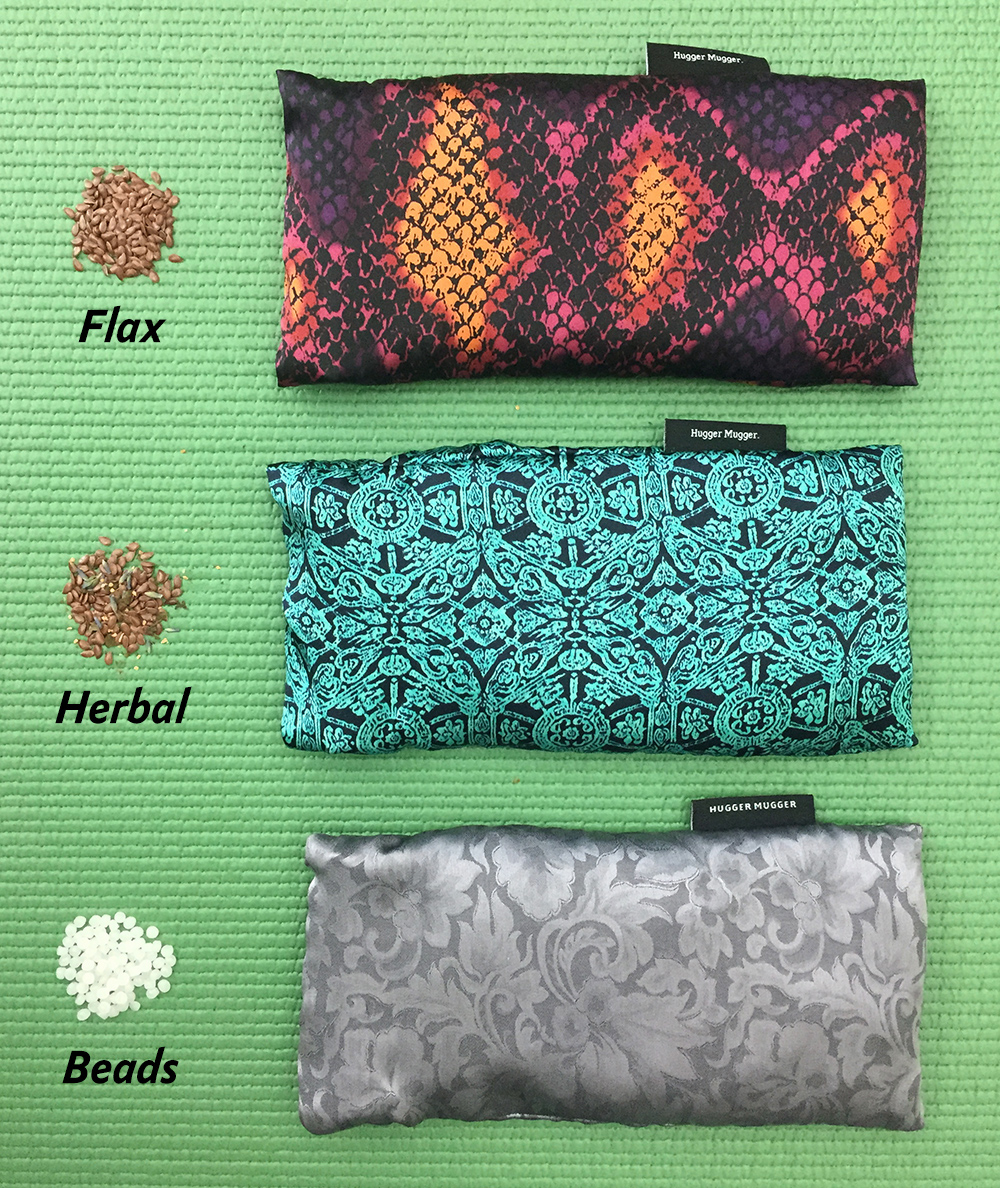
They may seem small and humble, but eye pillows are a powerful tool for promoting relaxation. Whether you’re practicing yoga asana or just needing a five-minute break, resting with an eye pillow can help smooth the jagged edges in your nervous system.
An article in Yoga Journal claims that applying gentle pressure to the eyeballs promotes deep rest, and even happiness:
“Light pressure on the eyeballs lowers heart rate, sometimes by quite a bit, by eliciting what’s called the oculocardiac reflex. It also stimulates the vagus nerve. The vagus nerve has an extensive resume: It regulates heart rate and digestion, and it’s the primary medium through which our belly brain regulates mood. It’s the main communicator to our rest-and-digest system, which helps us to relax more deeply. It also elicits our tend-and-befriend system, enabling us to reach out and connect with others. This is a critical factor in long-term stress resilience and, research shows, in happiness.”
In yoga practice, we use eye pillows to enhance restorative poses and Savasana. But like every other aspect of asana practice, there’s no one-size-fits-all eye pillow. That is why Hugger Mugger carries a variety of choices. Eye pillow filling comes in three choices: flax, herbal or beads. Here are some suggestions to help you choose what’s best for you:
For studios: Many studios don’t provide eye pillows for their students. The reason is a practical one: when eye pillows are being used by lots of different people, they need regular washing. This can be impractical, especially when you have 20 or more to wash at once. If you wash a flax or herbal eye pillow without emptying out the filling, it will turn into a brick. So you have to empty them out and wash just the covers. It’s just not practical to empty out 20 or more eyebags, wash the covers, and then refill the bags.
That’s why I keep eye pillows filled with plastic beads for students to use at my studio. Unlike the flax and herbal eye pillow filling, plastic beads don’t have to be emptied out when you wash them. To wash the bead-filled eyebags, you can put them in a sink full of hot water and a mild handwash soap. Let them sit for 10 minutes. Drain the sink and rinse the bags with cool water. Then wrap them in a towel to squeeze out excess moisture and hang to dry.
For individual practice: If you plan to buy just one eye pillow for your own use, any eye pillow filling will work. When you’re only washing one eye pillow, emptying the bag and refilling it is not a big deal. Here are the choices:

Flax: While any eye pillow filling will feel good on your eyes, many people prefer the feel of flax. Because flaxseeds are smaller than the plastic beads, they feel a bit more malleable, but denser at the same time. Flax seeds have a very subtle, grainy fragrance.
Herbal: Herbal eye pillows feel the same as flax eye pillows, but they exude the fragrances of lavender, orange and peppermint. Many people find that this relaxing blend promotes deeper relaxation. Some, who are more sensitive to smells, may find the fragrances stimulating. In this case, flax or beads would be a better choice.
Beads: If you want to have your own personal eye pillow, but want zero hassle in caring for it, beads are the way to go. As I said above, washing them is really easy. And if you’re super sensitive to smell, the beads have no fragrance.
One more thing …
If regular-sized eye pillows feel too heavy for you or some of your students, try a Piccolo Eye Pillow. Some people experience temporary blurry vision after using regular eye pillows, and people who wear contacts don’t usually like a lot of pressure on their eyes. Piccolo eye pillows are about half the size of regular eye pillows, and much lighter. These eye pillows have a removable cover, so they’re very easy to wash and appropriate for studio use. They come with flax or herbal fillings.
